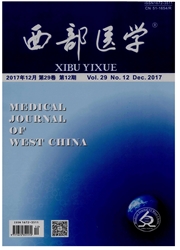

 中文摘要:
中文摘要:
粥样硬化性肾动脉狭窄(atherosclerotic renal artery stenosis,ARAS)是指动脉粥样硬化导致的肾动脉主干及其分支动脉的狭窄或闭塞性的病变,是我国肾动脉狭窄(renal artery stenosis,RAS)的首要病因。经皮经腔肾动脉成形术(percutaneous renal artery angioplasty,PTRA)及支架植入术(percutaneous renal artery stenting,PTRAS)曾作为ARAS的首选治疗方法。随着几个大型随机临床试验得出介入联合药物治疗并不优于单纯药物治疗的结论而引发广泛争议,使得ARAS患者治疗方案的选择成为困扰临床医生的实际问题。近年来新的国内外研究显示,保证介入治疗疗效的关键在于预测评估和适应证的把握。本文就ARAS介入治疗的争议、新型预测指标及适应证进行综述。
 英文摘要:
英文摘要:
Atherosclerotic renal artery stenosis (ARAS) is a disease that is caused by atherosclerosis and stenosis or occlusion of the renal artery and its branches. In China, that is the primary cause of renal artery stenosis (RAS). Percu- taneous renal angioplasty (PTRA) and percutaneous renal artery stenting (PTRAS) as the first choice were used for ARAS. The conclusion that several clinical trials fail to demonstrate the major benefits of endovascular stenting for renal artery stenosis in additionto optimal medical therapy has stirred up controversy. The choice of treatment options for pa- tients with ARAS has become a problem for clinicians. In recent years, New domestic and foreign researchs show the predictive value of some test items and indications are the key to ensure the efficacy of endovascular procedure. This article reviews the predictive value of new test items,indications and the current controversy of ARAS.
 同期刊论文项目
同期刊论文项目
 同项目期刊论文
同项目期刊论文
 期刊信息
期刊信息
